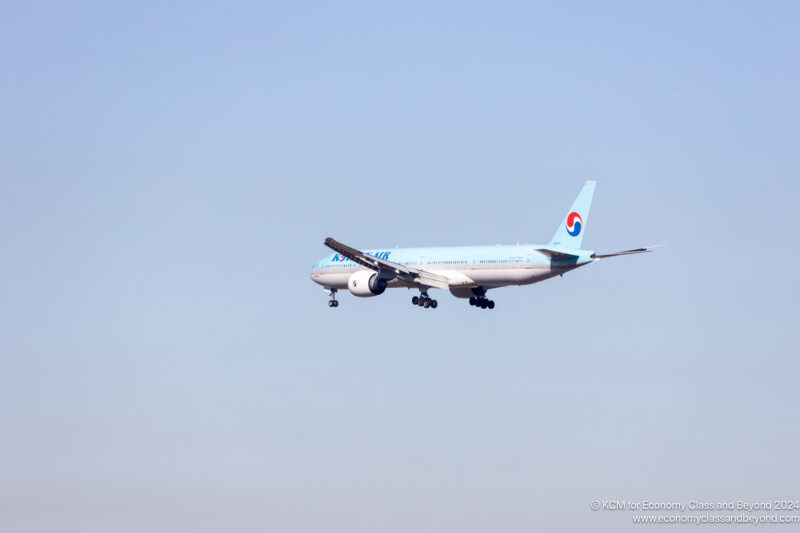In terms of “takeovers taking forever” this has been one that has taken its time, but after four years, Korean Air has finally taken over Asiana Airlines.

Korean Air Boeing 777-300ER – Image, Economy Class and Beyond
The initial announcement was made on 16th November 2020 – but on 12th December, Korean Air acquired 131,578,947 newly issued shares of Asiana Airlines, representing a 63.88% ownership stake and making Asiana Airlines a subsidiary of Korean Air.
In turn, Jin Air is combine with Asiana’s low-cost subsidiaries, Air Busan and Air Seoul
During the process of the sale, Korean Air has had to satisfy at least 13 different authorities of intentions – as well as provide remedies including:
- Giving up slots in Europe to allow T’Way Air to take over long-haul routes out of Seoul to provide competition
- The transfer of slots for services to Japan,
- The transfer of slots from Korean Air to Virgin Atlantic to launch a London-Seoul Route
- The sale of Asiana Airlines Cargo to Air Incheon
The next steps
With the takeover complete, Asiana Airlines will hold an extraordinary general meeting of shareholders on 16th January to appoint new board directors nominated by Korean Air.
It’s then a process to integrate the two carriers into one. Korean Air planning to integrate within two years.
The integration strategy includes network optimisation through diversified flight schedules on overlapping routes, service expansion to new destinations and enhanced safety investments. With a stronger merged airline (compared to a strong Korean Air and weak Asiana Airlines), it will strengthen Korean Air’s position, and enhance Seoul-Incheon as its fortress hub, whilst expanding the its network
For staff employed, Korean Air is stating that this will progress without workforce restructuring. They predict the combined organization will have natural staff growth through business expansion, with employees in overlapping functions being reassigned within the organization.
For Frequent Flyers, change will be afoot, given that both airlines are members of different alliances – Korean Air is part of SkyTeam, whilst Asiana Airlines is part of Star Alliance. The integrated frequent flyer program framework will be submitted to the Korea Fair Trade Commission by June 2025.
Program details will be communicated to customers following regulatory review.
It’s been process
From signing to the shares purchased and closed today, it’s taken more than four years to get this merger over the line, with consessions made to appease regulators.
With that line drawn, it will now be up to Korean Air how to combines the mixture of carriers into mega carriers to drive passengers in and out of the Seoul region.
Although I’m honestly surprises there’s no planned staff cuts – unless Korean Air has found a way to bypass the “synergy” phase without too many losses.
For now, we’ll have to keep a close eye on the combines Korean Air-Asiana Airlines entity.
For those frequent flyers who want to fly on Asiana Airlines, it might be time to lock in those redememptions sooner rather than later, as well as keep well abreast of what Korean Air has in plan when the comptetion commision makes its desiscon in June 2025.
Welcome to Economy Class and Beyond. Your no-nonsense guide to network news, honest reviews, in-depth coverage, unique research, as well as the humour and madness I only know how to deliver.
Our Social Media pool has expanded. You can find us across most networks as @economybeyond on BlueSky, Threads Mastodon and Instagram!
Also, remember that we are part of the BoardingArea community, bringing you the latest frequent flyer news from around the world.